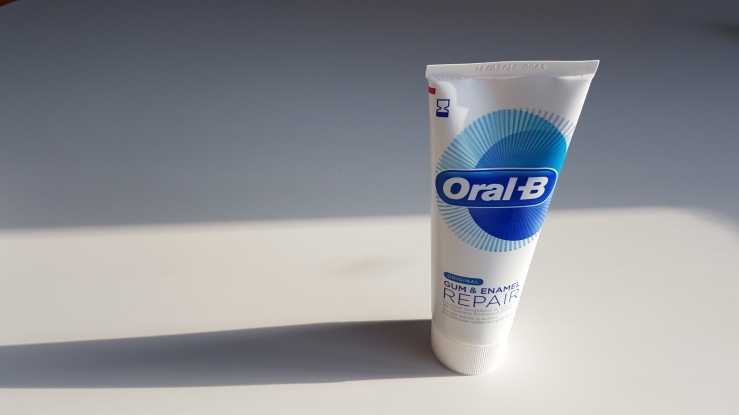
I promised in my post Oral-B Gum & Enamel Repair Original Toothpaste Review that if I find out the RDA level of this toothpaste I will announce it. Well I found it out recently, sort of. And this occurrence sort of made me annoyed once again. So I’m going to pour it out now.
I saw a representative from Oral-b recently. She was going to ask about our experiences of the Gum & Enamel Repair Original Toothpaste. I told mine and to my pleasant surprise she suggested we would fill an adverse reaction report. So we did. She said she had never heard anyone’s tongue getting numb from their toothpaste.
My most important question to ask from the rep was the magic RDA value of this toothpaste. I was dreading it as the reps are quite sensitive about the whole subject of RDA value. They know that it is thought widely amongst the dental professionals that the higher the RDA value is the more abrasive it the toothpaste is. So the manufacturers want to keep it a secret.
What Is RDA?
To explain it very simple way, the RDA is the grittiness of the toothpaste. If it is too high, it can cause tooth wear. But to explain RDA more elegantly, here is a quote by ADA (American Dental Association):
To help quantify the abrasivity of dentifrices, the ADA along with various academic, industry and government agencies established a standardized scale called Relative Dentin Abrasivity (RDA). This scale assigns dentifrices an abrasivity value, relative to a standard reference abrasive that is arbitrarily given an RDA value of 100.
All dentifrices at or below 2.5 times the reference value, or 250 RDA, are considered safe and effective. In fact, clinical evidence supports that lifetime use of proper brushing technique with a toothbrush and toothpaste at an RDA of 250 or less produces limited wear to dentin and virtually no wear to enamel.
ADA (American Dental Association)
So what this quote is saying is that most of the toothpastes are safe. Mind you, FDA (U.S. Food & Drug Administration) has set the safe limit of RDA to 200. But internationally it is the RDA 250 or below that is recognised as safe to use. I did a research and found out that many dental sites (both english and my native language) state that the highest safe RDA level has been set too high. It should be 100 or less.
Here is a link to one of the dental sites with a very good chart about abrasiveness levels in different toothpastes.
The Big Question
Ok, back to seeing the rep. I gathered all my courage and asked the big question.
Err, what is the RDA level of this toothpaste?
Oh boy, he looks annoyed. He asks if he has ever shown us a video about RDA. No, he hasn’t. He took his tablet out and put the video rolling. It was about RDA level of the toothpaste made by Oral-b. In the video they were demonstrating that it doesn’t matter what the RDA level is as long as it is below 250.
He looked victorious when the video ended. I asked again.
So, what is the RDA level of this toothpaste?
He said with a sigh that the RDA level of the Gum & Enamel Repair Original Toothpaste is somewhere between 100-200. So this is what I meant when I found out the RDA level of this toothpaste, sort of.
Conclusion
It is good to remember that not only the toothpaste’s RDA level determines how much you will get tooth wear. If you brush your teeth straight after breakfast, with a hard toothbrush and with too vigorous technique (applying too much pressure), it has very little meaning what the RDA level of the toothpaste is.
You might be interested in these posts as well:
Testing Oral-b Smart Phone Holder, Take 1
Testing Oral-b Smart Phone Holder, Take 2
Oral-B Gum & Enamel Repair Original Toothpaste Review

I have one lower molar which is slightly loose. After using Orab B Enamel and Gum repair, I too had had quite an adverse reaction. My mouth had long bits of mucosal lining from the inside of my cheeks, which I had to spit out. I also had a tingling sensation on the tip of my tongue for at least ten minutes after brushing. Is it worth persevering with this toothpaste?
LikeLike
Hello Rosabella, the representative of Oral-b said that the peeling of the mucosa should diminish the longer you use it. The tingling sensation might persevere. If it feels uncomfortable to use, I’d advice to change the toothpaste. Remember that no toothpaste will stabilize your loose molar. Without seeing your teeth it’s difficult to know why your molar is loose but normally it is because of the bone loss or imbalance in bite. Have you seen a periodontist for it? They normally check your occlusion as well. Hope this was helpful!
LikeLike